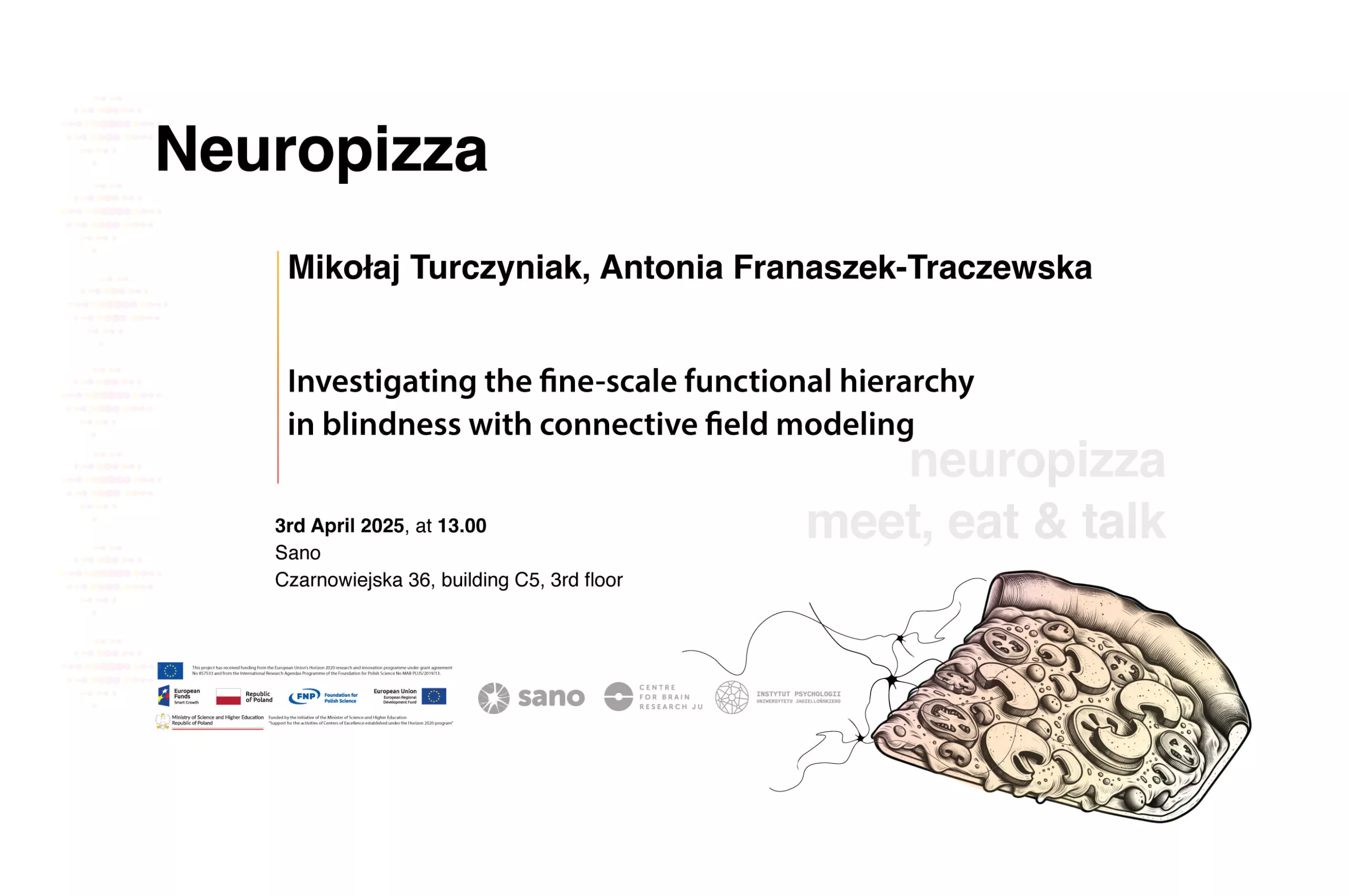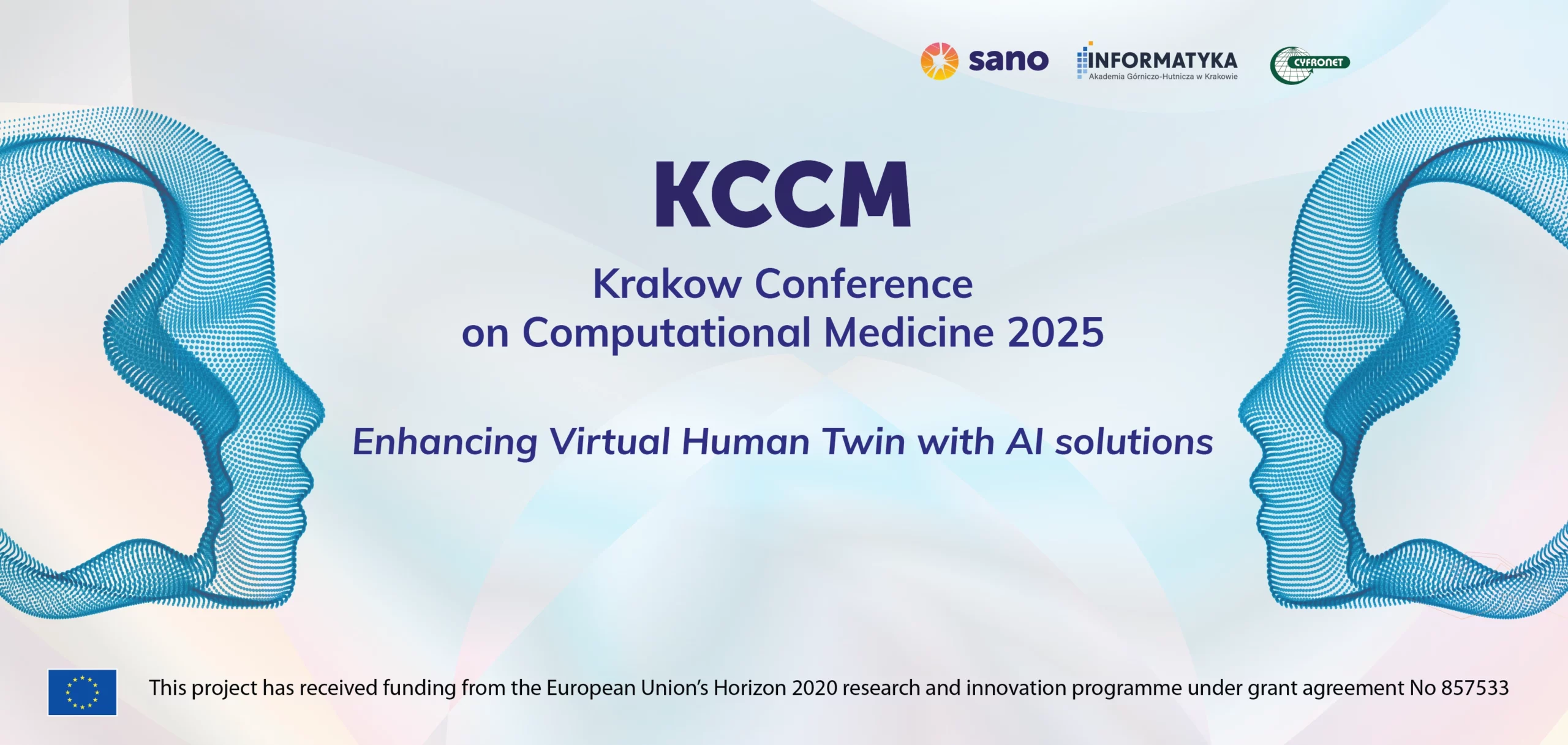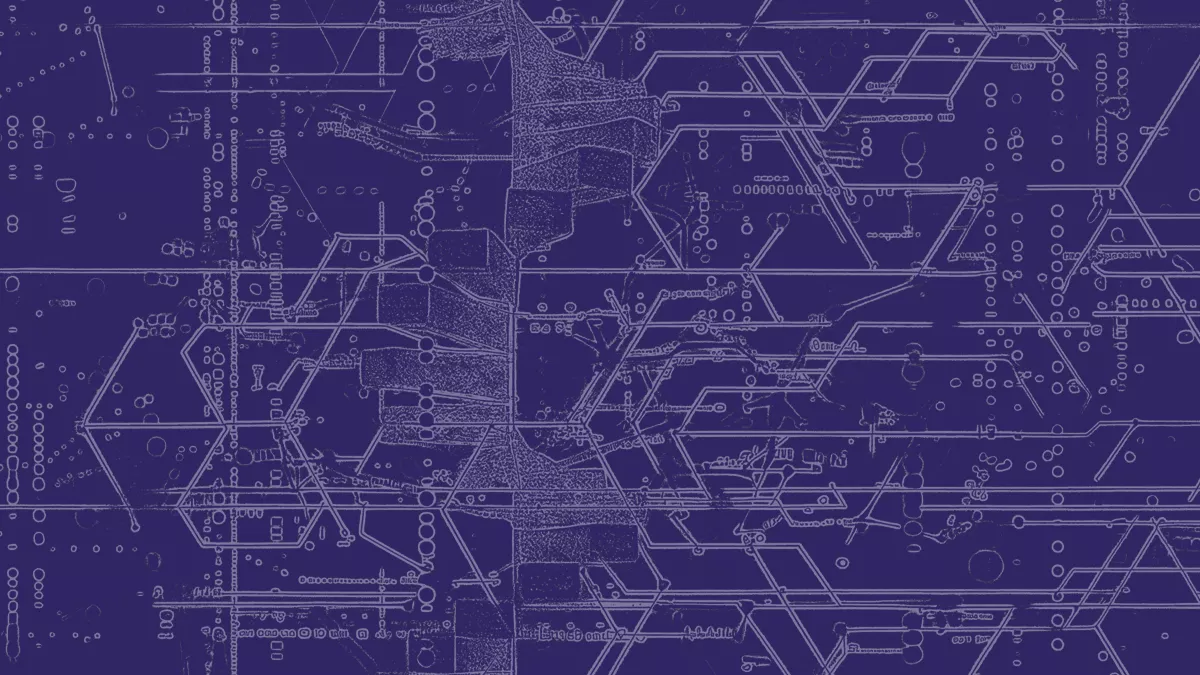
Neuropizza “Investigating the fine-scale functional hierarchy in blindness with connective field modeling”
In individuals with blindness, the visual cortex experiences extensive neuroplastic transformations. While major structural and functional reconfigurations have been thoroughly investigated, the detailed internal layout of visual areas under such conditions remains largely unclear. In sighted people, the visual cortex is organized retinotopically—each region corresponds to a specific part of the visual field. These maps form a hierarchical system, where population receptive field (pRF) sizes tend to grow from early to higher-order visual regions, potentially facilitating the integration of visual information. Retinotopy is conventionally examined through pRF analysis, which correlates neural responses with retinal locations based on visual tasks. Although fundamental retinotopic patterns may begin to form before birth and do not entirely depend on visual experience, the emergence of a functional hierarchy likely relies on early visual input during a sensitive developmental window. This implies that such hierarchical organization may be absent in those born blind. Nevertheless, the visual cortices of blind individuals demonstrate profound functional adaptations and integrate inputs from other sensory modalities, potentially reshaping their functional architecture in ways not yet fully understood. Our research seeks to explore this by employing connective field modeling (CFm), a technique that enables the mapping of retinotopy and functional hierarchies without the need for visual stimuli. Through this approach, we aim to uncover whether fine-scale organizational patterns in the visual cortex are maintained or fundamentally altered in the absence of visual perception.
Speakers:
Mikołaj Turczyniak and Antonia Franaszek-Traczewska, Sano, Czarnowiejska 36, building C5, 3rd floor
Location:
Sano, Czarnowiejska 36, building C5, 3rd floor (room 334)
3rd April 2025 13:00




